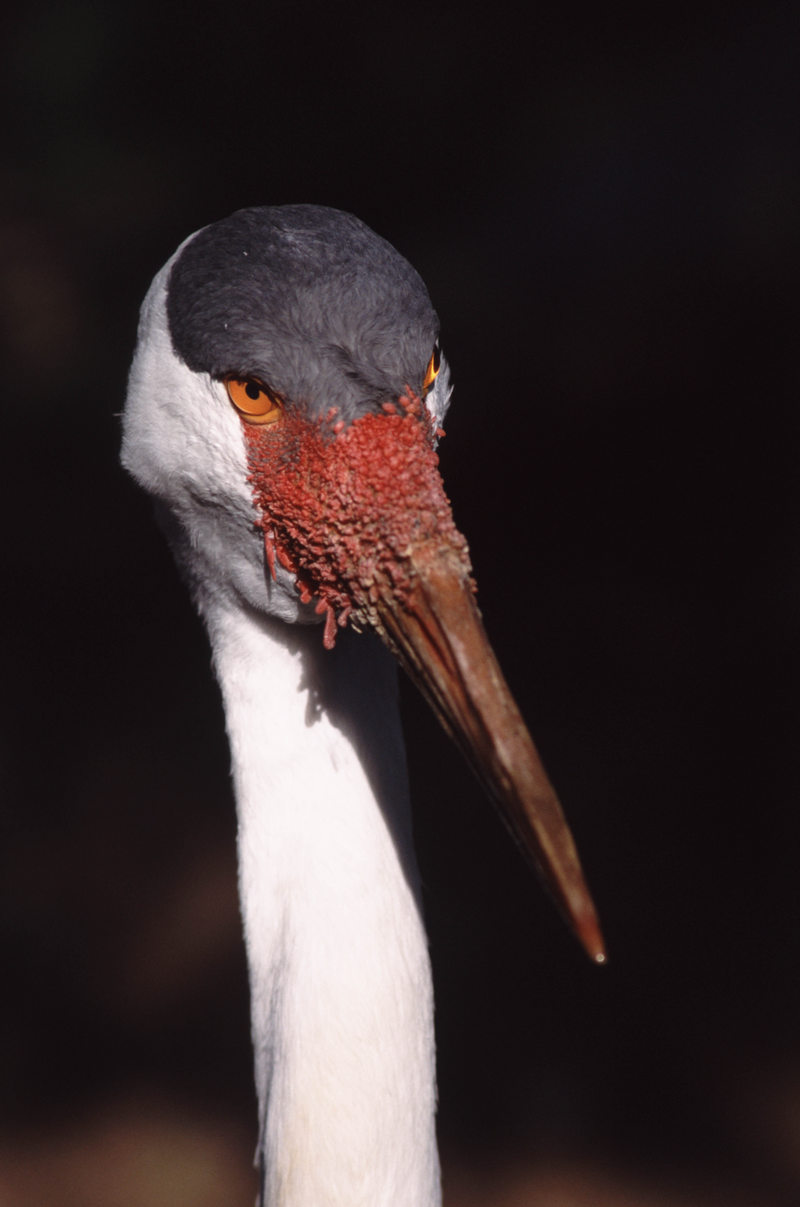|
| 질의: Small white | 결과: 1083번째/2237 | |
Wattled Crane (Bugeranus carunculatus) - Wiki
| 제목: | Wattled Crane (Bugeranus carunculatus) - Wiki
| |

| 해상도: 4644x7008
파일크기: 1322903 Bytes
등록시간: 2008:01:04 20:57:48
|
Wattled Crane
From Wikipedia, the free encyclopedia
Order: Gruiformes
Family: Gruidae
Synonyms: Grus carunculatus
[Photo] Head of Wattled Crane (Bugeranus carunculatus) showing distinctive wattles at the San Diego Zoo. Author: Matthew Hunt (http://en.wikipedia.org/wiki/User:Coneslayer) Copyright (C) 2007 Matthew Hunt
Permission is granted to copy, distribute and/or modify this document under the terms of the GNU Free Documentation License, Version 1.2 or any later version published by the Free Software Foundation; with no Invariant Sections, no Front-Cover Texts, and no Back-Cover Texts. A copy of the license is included in the section entitled "GNU Free Documentation License". |
The Wattled Crane, Bugeranus carunculatus is a large bird found in Africa south of the Sahara Desert.
At a height of up to 172 cm (6 feet) and an average weigh of 7.8 kg (14 pounds), it is the largest crane in Africa and is the second tallest species of crane, after the Sarus Crane. The back and wings are ashy gray. The feathered portion of the head is dark slaty gray above the eyes and on the crown, but is otherwise white, including the wattles, which are almost fully feathered and hang down from under the upper throat. The breast, primaries, secondaries, and tail coverts are black. The secondaries are long and nearly reach the ground. The upper breast and neck are white all the way to the face. The skin in front of the eye extending to the base of the beak and tip of the wattles is red and bare of feathers and covered by small round wart-like bumps. Wattled Cranes have long bills and black legs and toes. Males and females are virtually indistinguishable, although males tend to be slightly larger.
Juveniles have tawny body plumage, lack the bare skin on the face, and have less prominent wattles.
Range
The Wattled Crane occurs in eleven sub-Saharan countries in Africa, including an isolated population in the highlands of Ethiopia. More than half of the world’s Wattled Cranes occur in Zambia, but the single largest concentration occurs in the Okavango Delta of Botswana. Wattled Cranes are thought to have historically ranged over a much larger area including coastal West Africa.
Diet
All cranes are omnivorous. The principal food of the Wattled Crane is aquatic vegetation, including the tubers and rhizomes of submerged sedges and water lilies. In particular, Wattled Cranes depend heavily on the sedge Eleocharis spp. In dryer upland habitats, Wattled Cranes forage for grain, grass seeds, and insects, and they make use of agricultural fields when convenient.
Threats
Destruction, alteration, and degradation of wetland habitats constitute the most significant threats to the Wattled Crane. Hydroelectric power projects and other water development have caused fundamental changes in the species expansive floodplain habitats, and their most important food source Eleocharis spp. Human and livestock disturbance, powerline collisions, mass aerial spraying tsetse flies, and illegal collection of eggs, chicks and adults for food are also significant threats to Wattled Cranes throughout their range. The population is about 8,000.
The Wattled Crane is one of the species to which the Agreement on the Conservation of African-Eurasian Migratory Waterbirds (AEWA) applies.
http://en.wikipedia.org/wiki/Wattled_Crane
| The text in this page is based on the copyrighted Wikipedia article shown in above URL. It is used under the GNU Free Documentation License. You may redistribute it, verbatim or modified, providing that you comply with the terms of the GFDL. |
|
^o^
동물그림창고 똑똑전화 누리집
^o^
|
|